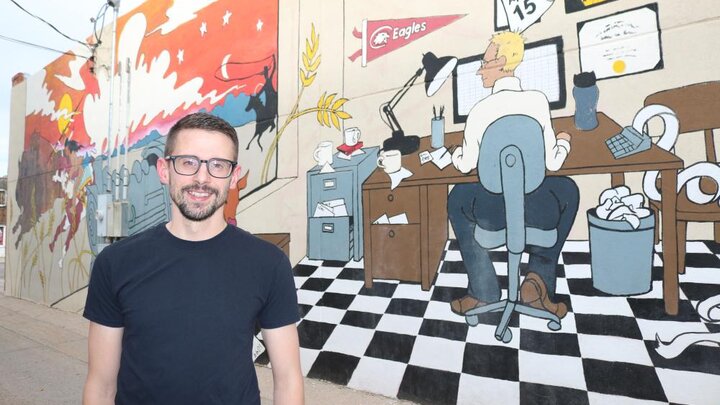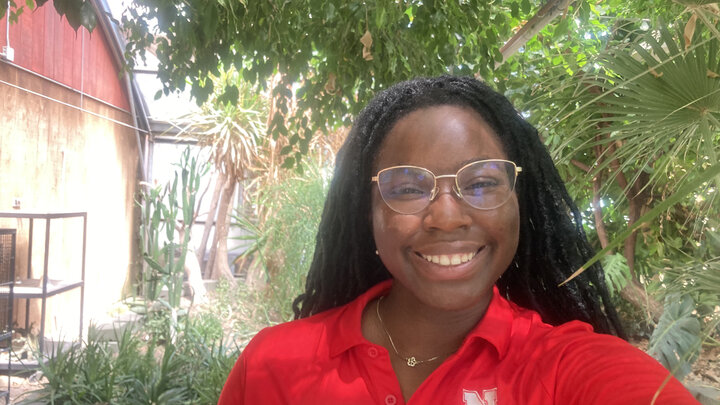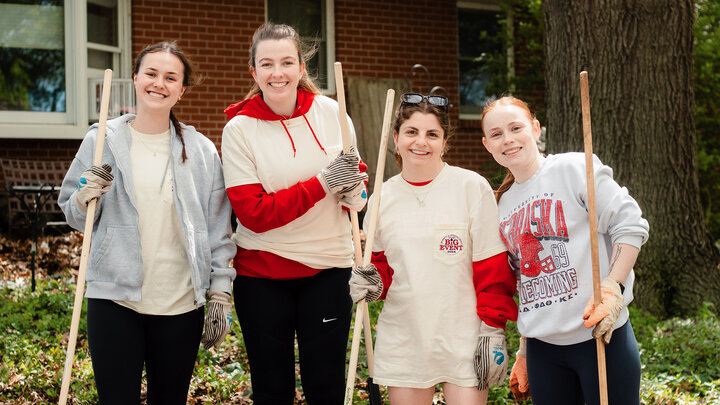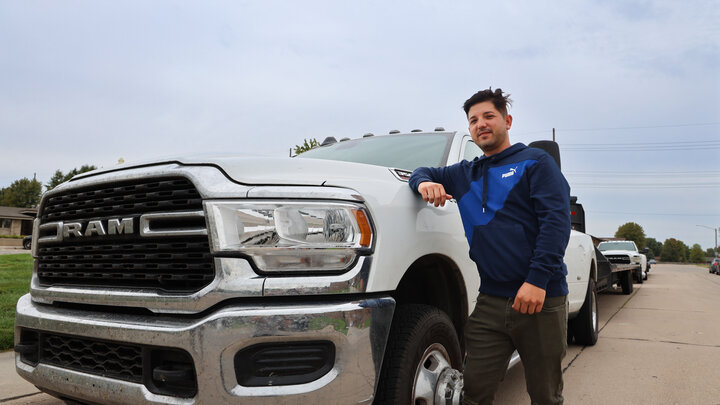Murals have long been part of Nebraska’s culture. Omaha is home to “Fertile Ground,” one of the largest murals in the country at 32,500 square feet. Designers spent 40 years installing 20 murals in the State Capitol. This summer, Rural Fellow Faith Junck contributed to that culture by helping paint the newest of 12 murals in Chadron’s downtown Art Alley.
“I never thought that I would be able to help paint a mural because I’m not super artistic,” Junck said.
But in Chadron, anyone who was willing was welcomed to help.
“Literally anyone in the community could come and help out however long they want to, so I painted the train,” Junck said.
In addition to working on community-designed projects, part of Rural Prosperity Nebraska’s Rural Fellows program is that students volunteer in the communities they serve. Junck’s service put her in the middle of community efforts.
“Having people here like the Rural Fellows, they are huge in helping us, said Gabby Michna, executive director of the Chadron Chamber of Commerce. “Faith definitely had a great role in contributing the time that she did while she was here.”
In Chadron, creating a mural is a community endeavor — anyone and everyone can help. Sometimes people don’t want to paint, Michna said, so instead they’ll bring shovels and brooms and wheelbarrows and clean the alley to make a more welcoming space.
“Public art is definitely one of those things that makes a community come alive—especially if you have so many people touching it,” Michna said. “Even if they don’t have an art background, they can help create a little piece of ownership of their town.”
Painted on the backside of the Gardner, Loutzenhiser and Ryan accounting firm, the mural Junck worked on was designed by Travis Hencey, an art teacher at Chadron High School. It was inspired by Norman Rockwell’s “Beating the Deadline,” altered to depict Chadron’s history and connect with the business on which the mural is painted. For Hencey, not only is the painting a communal process, but the creation, is as well.
“It ends up being a conversation with the client,” Hencey said. “I don’t know how many variations we did before we ended up with what got on the wall. That’s how I prefer to work. It’s not just mine — I want it to be what they want.”
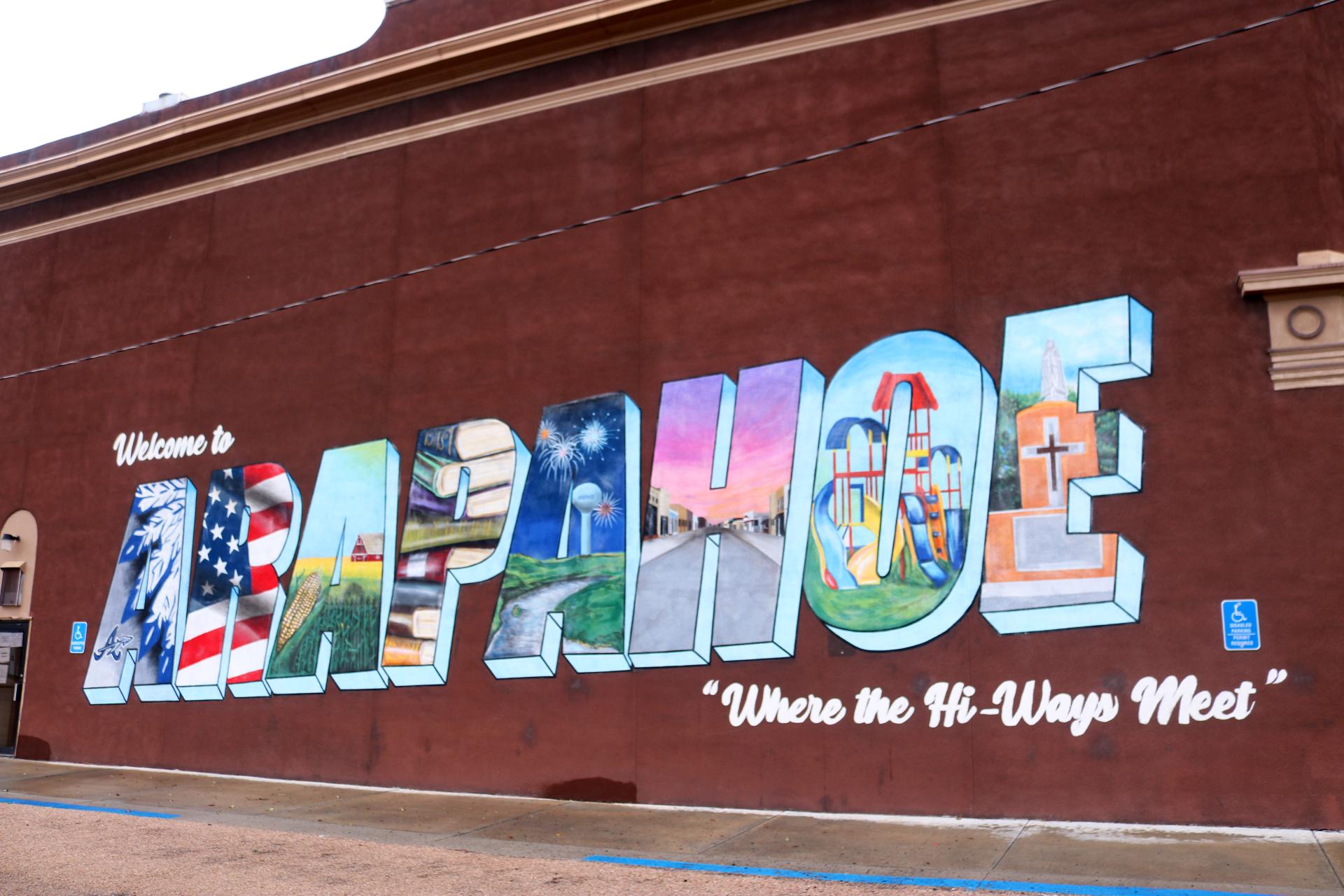
Chadron isn’t the first community where Rural Fellows have helped create a mural. In 2020, fellows Aline Abayo and Megan Tofflemire commissioned a mural in Arapahoe that displays landmarks unique to the area.
However, communities who host Rural Fellows aren’t the only cities adding color to their downtowns. Gone are the days of murals simply advertising soaps and sodas. Today, murals adorn entire buildings and showcase a community’s history, values and culture — displays of a community, often by community members themselves.
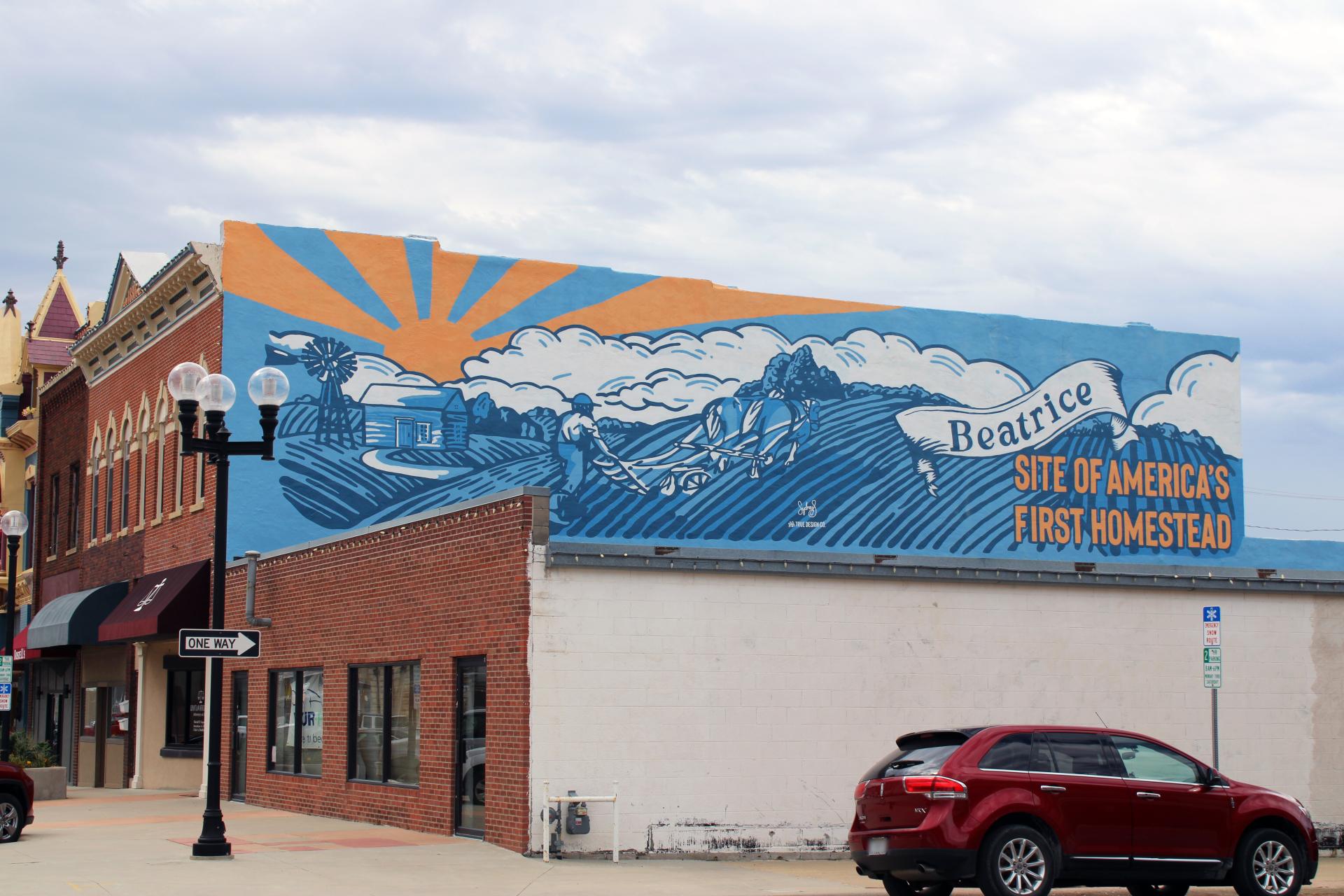
“Beatrice, Site of America’s First Homestead” was designed by Sydney Saathoff of Wymore, painted in 2021.
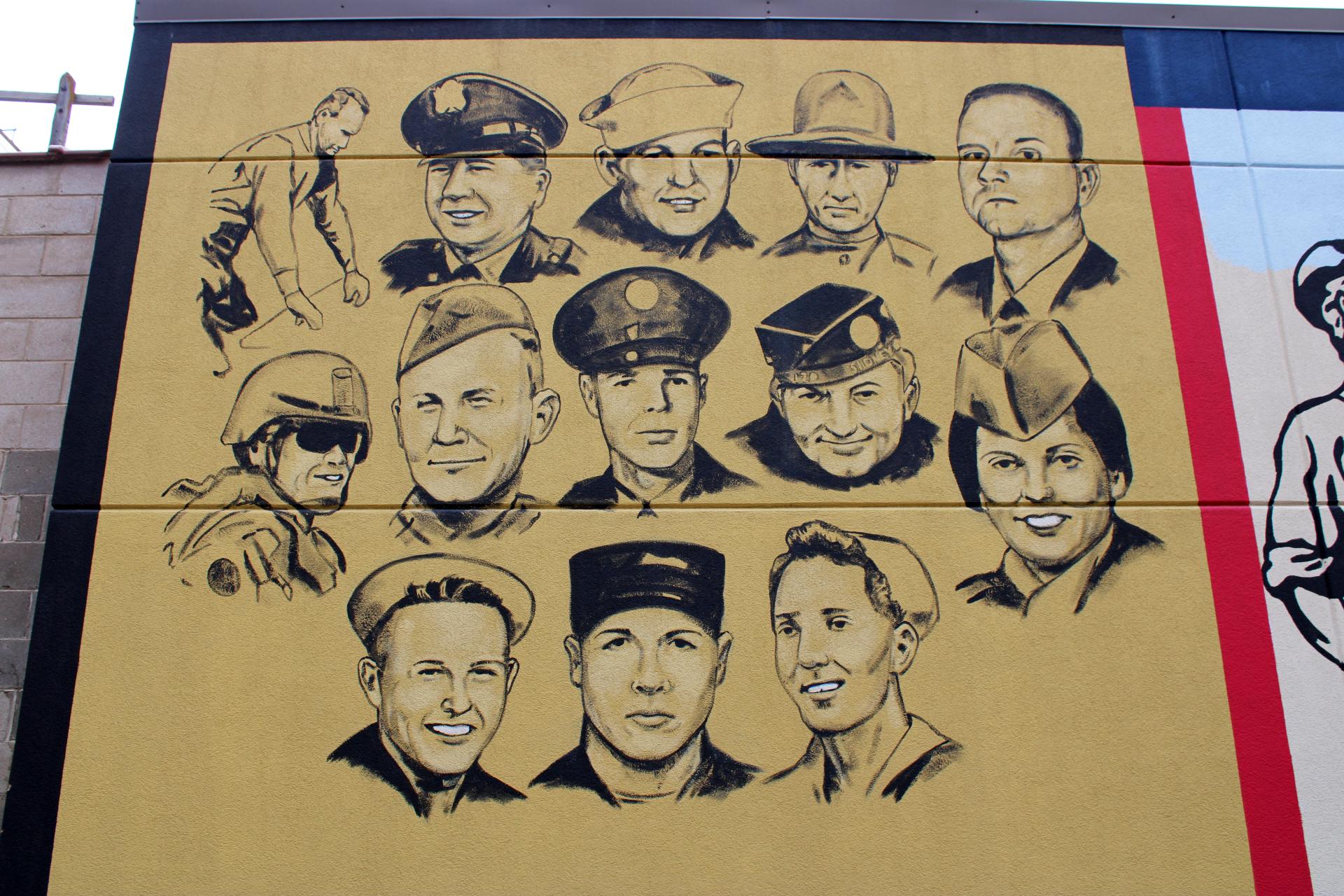
Kent Schwartz designed this mural in Nebraska City in 2017 to honor veterans. The faces depicted are actual Nebraskans who served in the armed forces.
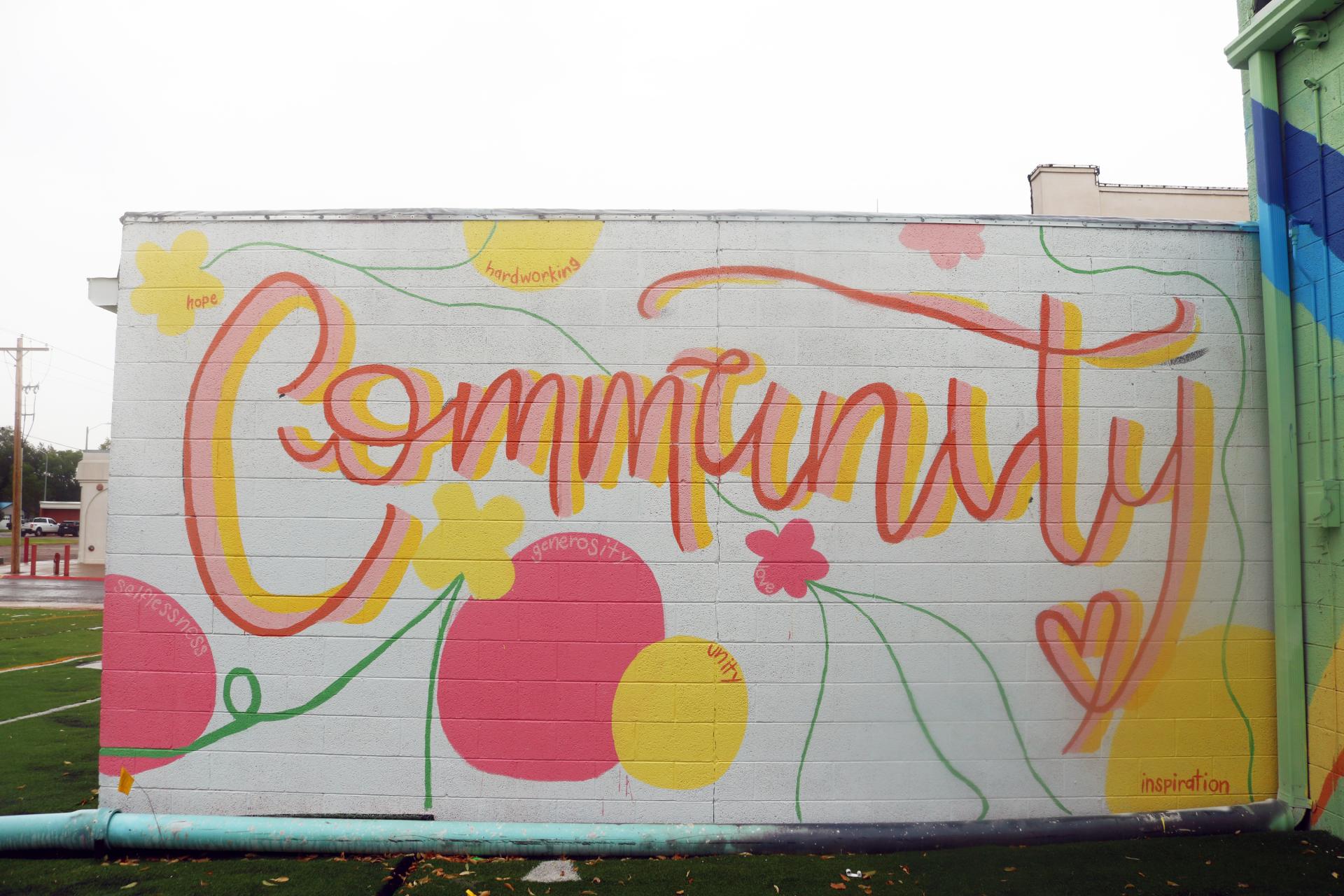
In Imperial's Art Park, “Community,” designed by locals Ava McNair and Chloe Dillan, was painted in 2022.
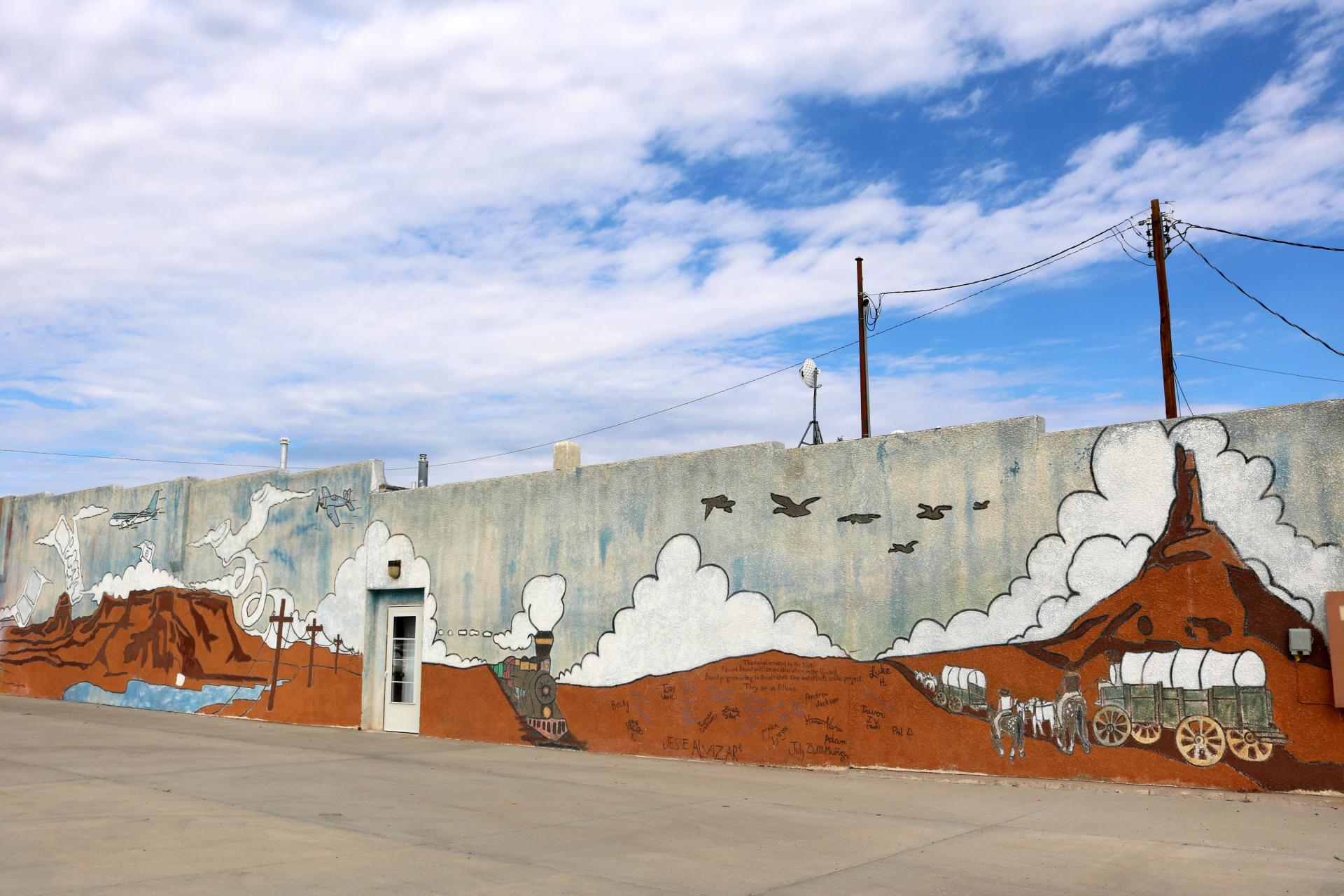
Designed and painted in 2008 by students in Scottsbluff’s Upward Bound program, this mural depicts the evolution of communication and transportation in Scotts Bluff County.
“When people can walk by the murals and say, ‘Hey, I helped paint the train on that one,’ or, ‘Hey, my kid painted the bottom of that one,’ there’s a sense of pride with those murals,” Junck said. “I know when I had people come visit me, I always showed them Art Alley.”
Hencey said: “Art is a part of culture, and every community has a sense of culture.”
